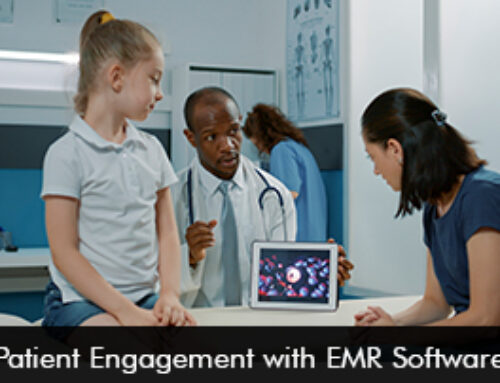Seamlessly communicating with your patients in times of crisis is crucial for any practice to survive and grow. Many changes have taken place due to the COVID-19 pandemic such as an increase in patient safety, education about patient care, and precautions against the virus that need to be communicated to patients effectively. Practices and hospitals are already burdened with staff shortages, overburdened hospital capacity, and a decline in revenue. Maintaining a bridge of communication may overwhelm you. To make your life simple we have jotted down the best ways to stay in touch with your patients. It is very important to keep your patients involved through the use of robust communication tools to reassure them and keep them updated regarding any modifications that happen.
4 Impactful Ways to Communicate with your Patient’s
American healthcare has been challenged in numerous ways with the surge of the pandemic and one of these challenges was to maintain quick communication with patients to keep them satisfied.
Mass Email Messaging
Mass email messaging is a convenient way for medical practices to communicate important changes regarding office closures and convey relevant information such as the availability of virtual tools for patients such as the Telemedicine EMR Software platform. Emails can also be used to educate your patients regarding how to use the telehealth platform to book their appointments and further highlight the benefits of video consultations with providers during COVID-19. Mass email messaging is a quick way to get in touch with all your patients.
Practice Website or Webpage
Your website should be updated regarding all the new changes and to communicate important information as stated by the World Health Organization (WHO). A dedicated page can be created on your website about COVID-19 where patients can ask questions about the virus and you have all the FAQs to keep patients informed and less confused. You can even educate your patients through your website as to how to self-test themselves using the self-test kit. Update the section of your blog and add authentic resources so your patients know that the information is reliable and they can depend on it.
Text Messaging
Mobile text messaging with your patients is a convenient and easy way to notify patients about the arrival of test results and appointment reminders can be sent to combat the issue of now-shows. Text messaging is a safe and powerful way to get your message across and improves scheduling. It can reduce the cost of administrative work as practices can communicate with several patients at one time.
Patient Portal EMR Software
Patient Portal EMR Software systems have been deployed by hospitals and clinics to facilitate secure and protected patient-provider communication on a HIPAA compliant platform. Patient portal software allows patients to quickly access lab results, it also provides the option to schedule appointments online and patients can pay their bills conveniently. Patient portal systems can also be used to send payment and appointment reminders to your patients. It is vital that patients feel involved in their healthcare journey during a pandemic and this is especially what the patient portal platform does.
The Importance of Patient Communication
Effective communication leads to positive results such as an increase in patient satisfaction, improved patient outcome levels, and even an increase in market share. Digital patient engagement tools and communication helps patients to feel empowered and important in times of the pandemic. Effective communication can educate patients with the best practices to help about new variants emerging and how to protect themselves and their loved ones.
Moving Ahead
Practices and hospitals need to adopt proactive communication strategies to keep patients involved and updated regarding their health and other healthcare advancements. Use digital communication tools to interact and connect with your patient groups to keep them happy and satisfied in trying times. Efficient communication also encourages preventive care and streamlines front-desk administrative tasks.







